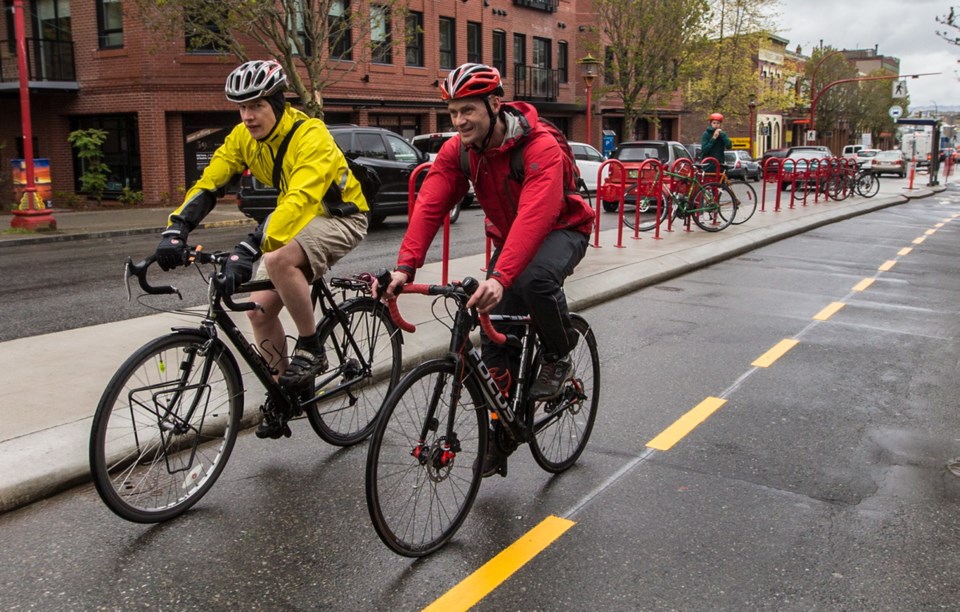Let me begin with an old joke: An out-of-town visitor asks a local resident: “How do I get to 1234 Maple Lane?” The local ponders the question a minute, and then replies: “I’m afraid you can’t get there from here!”
This is funny, if you assume that the visitor has a car, because given clear directions, motorists can reach almost any destination. However, it is sad, if the visitor is walking or cycling, because many locations are difficult to reach without a car.
Let me give a local example. Imagine that you want to travel from downtown to the University of Victoria without a car. Which bike route is suitable for inexperienced riders? Which bus route has dedicated lanes so buses avoid congestion and frequent service so passengers are not crowded? There are none.
This reflects our transportation-planning priorities. During the past century, governments invested tremendous resources in highways but did little to improve walking, cycling and public transit. As a result, it is difficult to get around without a car.
An efficient and equitable transportation system must be diverse in order to serve diverse mobility needs: walking and cycling for local errands, public transit on busy travel corridors and automobile transport when it is truly the best option, considering all impacts.
A significant portion of travellers cannot or should not drive due to age, disability or low incomes; if suitable options are unavailable, non-drivers will suffer from inadequate mobility, require chauffeuring or be forced to spend more than they can afford on vehicle travel. In addition, walking, cycling and public transit are space-efficient and inexpensive, so improving them reduces congestion and makes our communities more affordable.
I’m tired of hearing complaints about the costs of our new bike lanes. Let’s put these concerns into perspective. Victoria’s 20-year financial plan budgets $5 million (about $3 annually per capita), for bicycle projects, about six per cent of the $79 million (about $52 annually per capita) budgeted for various street improvements.
The portion of funding dedicated to cycling is only about half of Victoria’s 10.6 per cent bicycle mode share recorded in 2011, and far less than justified to make up for past under-investments or to achieve the city’s future bicycle mode-share targets. Such comparisons are complicated, as cyclists benefit from general street improvements and motorists benefit from other investments, including about $200 a year in provincial highway spending per resident and many hundreds of dollars in annual government-mandated parking subsidies per motor vehicle.
Fortunately, transportation agencies are responding to these needs by applying complete-streets policies, which design roads to accommodate diverse users and activities. They recognize that city streets must safely accommodate walkers, cyclists and buses, plus nearby businesses and residents, in addition to automobile traffic and parking. As a result, many urban streets are becoming more complete and multi-modal, including better sidewalks and crosswalks, bike lanes, bus lanes and bus stops.
Some people assume that this harms motorists. They are wrong. Everyone benefits from improved travel options that reduce traffic and parking congestion, increase road safety and reduce motorists’ chauffeuring burdens. Most people will experience times when they cannot drive; better mobility options prepare our community for our future selves.
Of course, roadway changes are disruptive, but please give them a chance. Slowly but surely, complete-streets policies are helping to create more efficient and complete communities.
Thanks Victoria, for improving walking, cycling and public transit. Please don’t stop.
Todd Litman is executive director of the Victoria Transport Policy Institute, an independent research organization, and a member of Cities for Everyone, which works to increase urban affordability.



